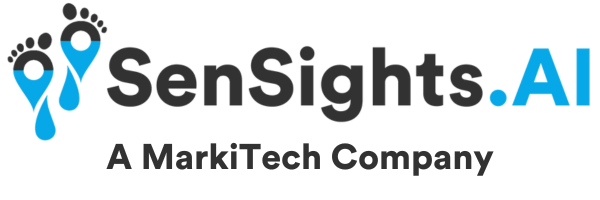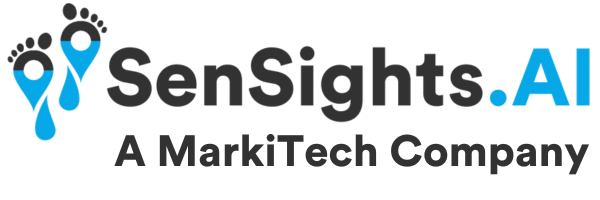19% of Medicare patients discharged from hospitals were readmitted at least once within 30 days, as per a recent report published by Excel Health Group. The corresponding yearly cost associated with potentially avoidable readmissions is estimated to be upwards of a staggering $17 Billion.
To deal with avoidable readmissions, the Centers for Medicare & Medicaid Services (CMS) has taken several steps which include the introduction of a Hospital Readmissions Reduction Program (HRRP) as well as making provisions in Medicare Advantage for coverage of non-medical benefits. However, as the number of baby boomers who will become Medicare beneficiaries is set to increase drastically, an increase in avoidable hospital readmissions is also expected to happen. Preventive as well as post-discharge care at home is becoming more important than ever, to minimize the high costs linked to such readmissions.
The way health care is provided has evolved significantly over the past few years. This is primarily because of enhancements in communication methods, development of remote monitoring solutions, and better data sharing. Today homecare has become an integral part of a patient’s recovery process; this is especially true for the senior patient population. Once seniors are discharged from hospitals or other skilled-care facilities, they continue to receive care in the comfort of their home. Depending on the needs of the senior, care is provided by involving nurses, medical professionals or non-medical staff referred to as personal support workers (PSWs).
Why do seniors get readmitted and what can be done to avoid this?
Though the goal is to keep unplanned visits to hospitals and clinics to a minimum, there are situations that warrant readmission. Sometimes, these situations are unavoidable and seeing a doctor is critical to ensuring patient’s wellbeing. However, some of these visits could be avoided.
One of the main reasons for senior readmission is premature discharge; i.e. when seniors are discharged too soon after a medical procedure or an inpatient stay. This leads to seniors returning to the hospital within a few days for further medical care. Avoidable re-hospitalization can be reduced by improving discharge planning and the hospital-to-home transition process. While discharge planning is relatively easier to do, transition to the home environment can pose some significant challenges. As more organizations and individuals get involved, the process becomes more complex and inefficient.
Discharge planning is key for transitioning the senior from the hospital to their home. Readmissions can be avoided by having stricter discharge protocols in place such as reviewing all clinical documentation, reassessing patient’s progress, and communicating key information regarding medications and possible follow-ups with family and PSWs. Clarifying responsibilities and highlighting recovery steps will improve care coordination and benefit everyone involved in the process.
Clear communication is essential. Communication is a link that can make or break the transition process, especially when it comes to seniors living with chronic diseases. When there is inadequate communication between hospitals, homecare companies, caregivers, and family members, the chances of avoidable readmissions increase significantly.
Recent innovations in healthcare technology, such as remote patient monitoring and virtual care technologies can help simplify the process of transition by enhancing communication and providing near real-time insights on the patient’s health and progress; shifting the focus from a hospital-centric to a patient-centric model.
For instance, installing sensor technology in the homes and/or asking patients to put on wearables can help generate real-time actionable data. Devices such as glucometers, implantable cardioverter-defibrillators, and blood pressure monitors can transmit this data to the caregivers and alert them if abnormal readings are obtained.
Today, the most commonly collected data includes vital signs, weight, Electrocardiogram (ECG), Electroencephalogram (EEG), blood oxygen levels, blood sugar, body temperature, blood pressure and sleep pattern information. This data can then be leveraged by smart application frameworks such as LocateMotion, to build personalized user patterns, generating real-time insights.
Having access to real-time data also means that health care providers are in a better position to manage resources and dispatch PSWs or nurses as and when the need arises. Having the ability to detect deviations from individual user patterns also enables the evolution towards preventative and predictive care models. By taking immediate action before situations become acute, hospital readmissions can be avoided or at least reduced.
For instance, according to the American College of Cardiology and American Heart Association guidelines, the use of stand-alone cardiac RPM can help monitor the progress of patients suffering from cardiac issues. Preliminary results of a trial, which analyzed remote monitoring of patients using Biotronik ICDs, showed that remote monitoring reduced the number of in-person clinic visits by 43%.
Exciting cutting-edge research is also being done on RPM front, which means that within the next few years we will be seeing more devices and forms of monitoring for different diseases. For instance, for several pulmonary diseases such as Chronic Obstructive Pulmonary Disease, assessment of cough severity is essential to ensure the wellbeing of the patient. A recent research paper showcased a real-time low-power wireless respiratory monitoring system with cough detection that measures the breathing rate and the frequency of coughing. This system utilized wearable wireless multimodal patch sensors to measure the respiratory frequency and a MEMs microphone to perform cough detection. The system is an innovative solution that can help monitor seniors living with pulmonary conditions.
Additionally, the use of virtual doctor chats, such as YourDoctorsOnline, is another approach that appears promising, reducing the need to physically move patients in and out of their homes. When patients are recovering, it is good for them to stay in safe surroundings because trips outside the house, especially to the hospital mean unnecessary exposure to bacteria, viruses, and other sources of infections. This can be easily prevented by using technology for follow-up appointments, prescription refills, and monthly check-ins.
The role of senior homecare providers
The role of senior homecare companies is critical when it comes to the provision of care. The processes put in place can have a positive impact on patient recovery and consequently, the reduction of readmissions that place a costly burden on the healthcare ecosystem.
We have seen that there is significant research and development happening in the remote monitoring space, resulting in the availability of new types of sensors/devices, with seamless and flexible integration to comprehensive application frameworks such as LocateMotion. As monitoring becomes more integrated, combining data received from more than one devices, can take in-home monitoring to the next level.
For instance, data from health sensors, security systems, fall and movement monitoring devices, as well as smart home applications can eventually provide medical institutions and home healthcare providers access to a broader array of both patient and environmental data. This data can help caregivers gain insights allowing them to make more informed decisions in a shorter time span.
Many homecare providers have realized this need to integrate technology in their existing frameworks and have started the process of weaving in remote monitoring solutions to focus on preventive care, particularly when it comes to seniors living with chronic conditions. While there is some early progress, there is a need for industry-wide adoption of these technologies and processes, which can eventually lead to faster recovery cycles and reduced readmissions.


